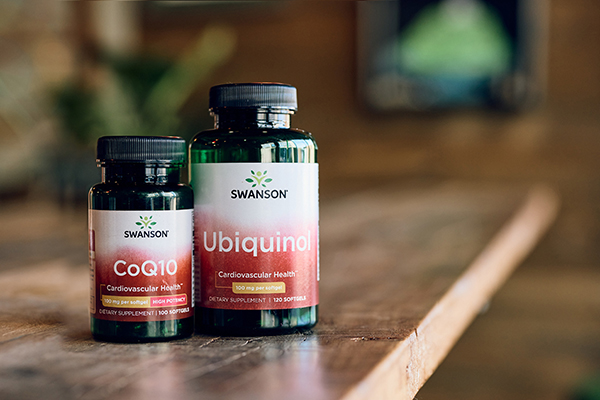Besides the teeny size and hard-to-find location, food ingredient labels can be filled with scary-sounding, Halloween fright-worthy names. There is no need to shudder or wonder about mysteriously sounding food label ingredients. A little food label name decoding can greatly impact your understanding of food ingredients and their names, plus help you be confident about your food choices and stay on track in your health and wellness journey.
Here are five scary-sounding — but actually not-so-scary — ingredient names commonly found on food labels:
Tocopherol
Tocopherol is more commonly known as vitamin E. Tocopherol is a food label ingredient you want to see if you are looking for food or health products that contain antioxidants. As a fat-soluble antioxidant, vitamin E may help protect cells from the effects of free radicals. Free radicals are molecules that contain an unshared electron and react rapidly with oxygen, causing damage to cells.
Vitamin E occurs naturally in some foods, can be added to foods, or is available as a natural vitamin E supplement. In addition to its antioxidant benefits, research shows that vitamin E is involved in immune function and blood vessels dilation. Foods that provide vitamin E include green leafy vegetables like spinach and kale, seeds, nuts and vegetable oils, plus nut butters.1
Cholecalciferol
Is cholecalciferol a fungus? a medication? How do you even say it? Cholecalciferol, pronounced kä´ləkalsif´ərôl´, is a very important vitamin hiding in a scary looking name — it’s actually vitamin D. Produced in our skin by irradiation with sunlight, vitamin D aids in the absorption of phosphorus and calcium from our intestinal tracts. Vitamin D deficiency can be more common in people who spend a lot of time indoors or live in the northern parts of the United States or Canada. Older, obese or pregnant individuals are also more likely to be lacking in vitamin D.2
Turmeric
This ingredient is often used in curry, and you might be more scared about how spicy the curry is rather than this ingredient. Turmeric is a common spice and powerful antioxidant plant related to ginger. It has been used in food and medicine in South Asia and India for centuries. Curcuminoids, the primary active ingredients in turmeric, give the spice (and that curry!) its characteristic yellow color. Recent health studies suggest the curcuminoids found in turmeric may help reduce heart attack risk after surgery, alleviate knee pain from osteoarthritis as well as ibuprofen, and reduce skin irritation caused by certain radiation treatments.3
Ascorbic Acid
There’s no need to be frightened by ascorbic acid; it’s another name for vitamin C, which plays a role in helping the human body grow and repair tissue. According to the National Institutes of Health (NIH), vitamin C is needed to aid in the absorption of iron, form key proteins found in tendons, ligaments and blood vessels, help heal wounds, and repair or maintain teeth, bones and cartilage. Since vitamin C is an antioxidant as well, it may block damage created by free radicals, which are largely responsible for the aging process and may play a role in conditions like arthritis or heart disease. The human body doesn’t make or store vitamin C, so it’s important to include foods rich in vitamin C like citrus fruits in your diet or vitamin C supplements in your daily vitamin routine.4
Here are some of my favorite health products from Swanson that include these monster-good ingredients: Organic Turmeric Tea | Swanson’s Daily Essentials Kit | 100% Certified Organic Turmeric | Vitamin E Skin Care Cream| PB2 Powdered Peanut Butter | Swanson Zinc & C Lozenges
So even though a food label might have ingredients that look like offerings at a monster mash buffet table, that doesn’t necessarily mean you shouldn’t choose that product.
If you’re looking for more resources on reading food product labels with confidence, check out Swanson’s product label guide.

About Amy Sunderman, MS, RD
Amy is a registered dietitian, nutritionist and author with more than 20 years of experience in the supplement industry. Amy is passionate about dietary supplements and the health benefits they offer. She enjoys working to find novel nutritional ingredients with strong clinical research behind them to drive innovation and provide health-promoting products to consumers.
Sources
1 Vitamin E. National Institutes of Health. https://ods.od.nih.gov/factsheets/VitaminE-HealthProfessional/https://www.nongmoproject.org/gmo-facts/what-is-gmo/ (Accessed 10/5/2017)
2 Am I Deficient in Vitamin D? The Vitamin D Council. https://www.vitamindcouncil.org/about-vitamin-d/am-i-deficient-in-vitamin-d/ (Accessed 10/5/2017)
3 Turmeric. National Institutes of Health: National Center for Complementary and Integrated Health. https://nccih.nih.gov/health/turmeric/ataglance.htm (Accessed 10/06/2017)
4 Vitamin C. National Institutes of Health: U.S. National Library of Medicine. https://medlineplus.gov/ency/article/002404.htm (Accessed 10/06/2017)




